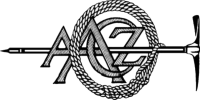- Home
- Nepal
- Adventure Activities
- Peak Climbing
- Mountain Expedition
- Local Tours
- Sirubari Village Homestay
- Ghale Gaun
- Kalinchowk Tour
- Halesi Mahadev - Maratika Cave package
- Chitwan Jungle Safari
- Day tour in Kirtipur
- Day tour in Kathmandu City
- Spiritual Tour to Muktinath
- Chitlang and Kulekhani
- Bardiya National Park
- Jeep Tour to Rara Lake
- Gosaikunda Lake
- Manakamana day Tour with cable-car ride
- 4WD Jeep Tour to Upper Mustang
- Family Holidays
- Heli & Mountain Flights
- Trekking Routes
- Kailash Mansarovar
- Bhutan
- Tibet
- Multi Country
- Domestic Flights
- Contact
- Home
- Nepal
- Adventure Activities
- Peak Climbing
- Mountain Expedition
- Local Tours
- Sirubari Village Homestay
- Ghale Gaun
- Kalinchowk Tour
- Halesi Mahadev - Maratika Cave package
- Chitwan Jungle Safari
- Day tour in Kirtipur
- Day tour in Kathmandu City
- Spiritual Tour to Muktinath
- Chitlang and Kulekhani
- Bardiya National Park
- Jeep Tour to Rara Lake
- Gosaikunda Lake
- Manakamana day Tour with cable-car ride
- 4WD Jeep Tour to Upper Mustang
- Family Holidays
- Heli & Mountain Flights
- Trekking Routes
- Kailash Mansarovar
- Bhutan
- Tibet
- Multi Country
- Domestic Flights
- Contact
Tsum Valley Manaslu Circuit Trek
An exciting Trekking experience
The Tsum Valley, also known as the Hidden Valley, a land of monasteries and hamlets with Tibetan population, lies on the northern part of Manaslu on the Nepal-Tibet border and used to be a restricted area until 2008.
The trek ascends the Gandaki River valley, which is full of many rivers and waterfalls, offering the chance of a plunge into some bathing pools. The Valley stands with a majestic backdrop of the Baudha Himal, Ganesh Himal, Sringi Himal, and other mountain ranges. It has a long history of Buddhism. The legend believed that Milarepa meditated in the caves of the mountain. The biggest challenge then awaits—crossing the snow-bound Larkya La pass (5213m). As we cross, we see snow-covered peaks over 6500m towers above. While descending, one of the snow takes us through alpine then tropical areas, bursting with ferns, bamboo, pine trees, waterfalls and aqua-blue green lakes laced with cotton-white beaches. Finally, Manaslu will disappear as we descend to Beshishar (832m.)
Destination: Manaslu, Nepal
Trip Routes: Kathmandu - Soti Khola - Machha Khola - Jagat - Lhakpa - Chumling - Chhokang Paro - Nile; Mu Gompa and Dhephyudonma Gompa - Rachen Gompa - Gumba Lungdang; Ganesh Himal Base Camp - Bhi - Namrung - Lhogaon - Samagaon; Manaslu Base Camp - Sambo - Dharamasala - Bhimthang; Larkya Pass - Tilije - Beshisahar; Dharapani - Kathmandu
Activities: Trekking and Sightseeing
Season: February to May and September to December
2 - 18
Detailed Itinerary
- Day 1 Kathmandu
Upon your arrival at the Kathmandu airport, our representative from mountain sun valley treks will welcome you and transfer to your hotel in Kathmandu. - Day 2 Kathmandu Sightseeing
Today, we will have a day trip to world heritage sites in Kathmandu. - Day 3 Kathmandu to Soti Khola (730m)
Today we take about a 3 and half hour comfortable drive to Dhading Bensi and another 4 hours drive to Arughat. We continue another 2 hours by local Jeep to Soti Khola. Overnight in Soti Khola. - Day 4 SotiKhola to Machha Khola (930m)
The trail goes along the Budhi Gandaki River, you climb again to Almara through beautiful forest trail. Once again descends to the wide, sandy river bed and follows a path, which runs below the steep, craggy valley side. We have short climb up once again on a trail to Machha Khola. - Day 5 Macha Khola to Jagat (1410m)
We continue our journey along the Budhi Gandaki river, we cross the Machha Khola and head upstream to the tiny village of Khorlabeshi and the hot springs at Tatopani. We cross the river on a suspension bridge and another short climb to Jagat. - Day 6 Jagat to Lhakpa (2240m)
we climb over a rocky ridge to Salleri and then descend to Sirdibas. The valley widens a bit as the trail continues up to Ghatta Khola. Walk past Philim to the north across a forest with the views of the narrowing valley and walk up north from Gum Pul we reach Lhakpa. - Day 7 Lhakpa to Chumling (2386m)
This day the trail enters into a big forest of pine and Rhododendrons and local tropical bamboos. Following the trail, you will also observe Tibetan culture enriched with some monuments of peace, Mani Walls, Stupa and Prayer flags, which makes your mind more peaceful and makes day walk more memorable. - Day 8 Chumling to Chhokang-Paro (3030m)
Classic Tibetan culture, warm hospitality from Local habitats and peaceful nature energizes for trek forward to more beautiful villages Chhonkang- Paro. This walks offers you the wonderful views of several Himalayas inclusive of Ganesh Himal. - Day 9 Trek to Nile (3350m)
This day you will explore to a retreat of Monk Kongchog who had died after 26 years of meditation at retreat center. Buddhist monastery, ritual old thanks as and the daily pray functions at the monastery are the main thing to observe during this day. - Day 10 Excursion to Mu Gompa (3700m) and Dhephyudonma Gompa (4060m)
This is the day to visit historical Mu Gompa, walking through a narrow valley and enjoying with morning sunrise Mu Gompa can be reached. After Mu Gompa, we continue our journey to the Dhephu Doma Gompa. - Day 11 Trek to Rachen Gompa (3100m)
On the way back you will explore some of the ancient gompas and short study about Buddhist religion in this unique valley around the Himalaya. - Day 12 Trek to Gumba Lungdang (3200m)
Leaving the villages of monasteries and wonderful settlement behind we walk through the pine and rhododendron forest continue south until a bridge crosses to the west bank and pass again through Chhokang village then walk down below following the same trail to our previously stayed camp Chumling village. - Day 13 Excursion to Ganesh Himal Base Camp Hike (4900m)
Trek from Gompa Lungdang to Ganesh Himal Base Camp (5000m) and then return back to Gompa Lungdang to camp. The ascent takes 3 -4 hours while descending takes approximately 2 hours. From Ganesh Himal Base Camp you have the best views of the entire Ganesh Himal Range. - Day 14 Gumba Lungdang to Bhi (3130m)
From Gumba Lungdang, we continue on the northern route in the lower Tsum Valley. Pass the village of Dorjon Kharka just before reaching Rana. Cross the large suspension bridge in the main valley of the Manaslu Budhi Gandaki River. Continue towards the Manaslu circuit route. - Day 15 Bhi to Namrung (2550m)
We gain altitude to take us into alpine territory and increasing mountain views. There are more Mani walls and 3 more crossing of the Buri Gandaki on our route to Namrung, where our permit is checked. Above this village, the valley opens out and there are extensive pastures. We camp just above the village we get our first incredible views of the Manaslu North and then of Manaslu main ahead. - Day 16 Namrung to Lhogaon (3180m)
We pass through Lho, a large village at 3150m where there is a lovely little monastery and numerous Chortens and Manis. At a fork in the trail, we take a detour to the left, which leads up to Honsansho Gompa and the Pungen Glaciers, from where there is a stunning view of Manaslu. - Day 17 Lhogaon to Samagaon (3530m)
We head straight towards Peak 29, ahead of us, then follow the lateral moraine of the Pungen Glacier towards Sama. Breathtaking views of the Manaslu, Northern Manaslu (7145m) and the Naike. Surrounded by mountains in a peaceful forest, we take a rest day to acclimatize and relax. Overnight in Samagaon. - Day 18 Samagaon (3530m)
Rest day, explore around the valley. Overnight in Samagaon. - Day 19 Manaslu Base camp Excursion day (4800m)
We hike up to the north of Pema Choling Monastery. Trek to Manaslu Base Camp is a side trip from Samagaun, which takes around 5 hours to climb up to 4800m. to Base Camp and 3 hours to down to Samagaun. The trail offers amazing views of Manaslu Glacier, Birendra lake and typical village Samagaun. - Day 20 Samagaon to Samdo (3690m)
We cross a high plateau and skirt around the ridge of the lateral moraine. We then climb a terraced hillside to reach one of the most remote permanent settlements in Nepal. Samdo is only a day’s walk from Tibet by the Lajyang La pass (5098m). Overnight in Samdo. - Day 21 Samdo to Dharamshala (4470m)
Crossing the tundra, it winds its way to the foot of the immense Larkya glacier which pours out of the Manaslu. After crossing to the East bank of the river, we reach the last permanent settlement in the valley which is called Sumdu. Above the village, we cross the stream which runs down the Gya La (pass), the pass to Tibet, and there are the ruins of another village Larkya Bazaar. We continue another couple hours to Dharmasala. - Day 22 Dharamshala to Larkya pass (5106m) to Bhimthang (3720m)
We first head towards Cho Chnda, then we reach the ablation valley on the Northside of the Larkya Glaciers. Finally, we walk across the moraines of the glacier, making a gradual ascent which becomes steeper only in the last section to the pass. - Day 23 Bimtang to Tilije (2300m)
The route gets easier. We start with a gentle descend through paddy fields towards the small Karcha La pass and descend through fir tree and rhododendron forests to Tillije. - Day 24 Tilije to Dharapani – Trek and drive to Beshisahar (760m)
Today the trail runs gently downstream of the river passing the village of Dharapani. We catch local jeep and drive to Beshisahar. - Day 25 Beshisahar to Kathmandu (1400m)
After breakfast, we drive back to Kathmandu. - Day 26 Departure
Transfer to airport for final departure.
This trip can be redesigned or redeveloped as per your taste, For more information please e-mail us at This email address is being protected from spambots. You need JavaScript enabled to view it.
Cost and dates
We do small group trek or private trip as your request.
For quick information / contact us at whatsapp/viber + 977 9841815039
Or Drop us inquiry at This email address is being protected from spambots. You need JavaScript enabled to view it.
Tips & Resources
This trek can be redesigned or redeveloped as per your taste, For more information please e-mail us at This email address is being protected from spambots. You need JavaScript enabled to view it..
Frequently Asked Questions
It is always a good idea to involve yourself in doing physical exercises before trekking. Not that you have to be all athletic and muscular to trek. An average level of physical fitness will make the journey less stressful.
Availability of drinking water is not the problem. The problem is the cost of it at higher altitude. As you gain height, the price of water rises up to 2-3$ per liter.An alternative way of getting drinking water is by having your water bottles filled in tea houses. Tea houses will provide you boiled water for about 1$ per liter. They are completely safe for drinking.
Food is not of any concern while trekking. You will get all kinds of cuisines. For breakfast, tea houses will provide you with eggs cooked in your preferred style along with pan cakes, bread butter, roti, and so on.Various other dishes like pizza, pasta, momo, chowmein and many more are also available. The most preferred dish is Dal Bhaat. It is a typical Nepali meal. Rice is served with vegetable curry, lentils, tomato chutney and meat curry.
Trekking is an extreme sport and does come with a lot of risks. Some unavoidable risks are avalanche, heavy rainfall, earthquake, landslide and other such natural calamities.You might fall and injure yourself or catch some viral flue. The deadliest risk of trekking is AMS or Acute Mountain Sickness. This sickness occurs when a great altitude is gained and the body fails to adjust to the changing pressures associated with it. Anyone can fall a victim of the sickness and if not treated in time, it can be fatal.
There is no such hard and fast rule that you must have one. But it is highly advisable to travel with them. Some of the treks cannot be trekked without a guide most of them are the restricted ones.
Showers are available at the teahouses. They will usually be shared bathrooms in most teahouses, especially the higher up you go. You will have to pay for a hot water shower per person.
Visit us
-
JP Marga, Thamel, Kathmandu, Nepal
-
+977-01-5365371
-
+977 98418-15039
(Whats App, Viber & Telegram)








